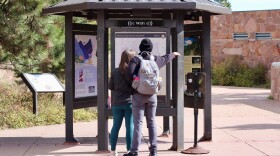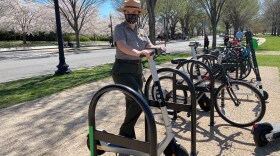-
During the lapse in federal funding, Utah and Colorado, along with several nonprofit partner organizations, stepped in to keep key visitor services running.
-
The Trump Administration is using revenue from recreation fees to keep bathrooms clean and trash tidy at national parks during the shutdown. But parks are not charging fees at this time.
-
The National Park Service said most roads and trails are open, but most buildings are closed. Some are confused about what they’ll find when they arrive at any given park site.
-
It wasn’t a typical fall day at one of the most popular national parks in the country. The night before, the federal government shut down, leaving fewer workers on the job. Yet the Trump Administration decided that national parks should largely remain open, nonetheless.
-
Park road and trails will mostly be open to visitors, but buildings and sites that can lock during non-business hours will stay inaccessible.
-
Rocky Mountain National Park is ready for summer crowds and will once again require timed entry to access the park. Here's what you need to know to guarantee your access to RMNP.
-
Frustration among outfitters and guides over federal permitting is not new. Recreation-focused staff and budgets at national forests, in particular, have gone down as demand has gone up. This has been resulting in lengthy delays in responses to applications.
-
Interior officials are reviewing the ‘appropriate size’ of 6 national monuments in the Mountain WestFederal officials are reportedly considering shrinking at least six national monuments in the Mountain West region to increase energy development on public lands.
-
Interior Secretary Doug Burgum last week ordered all national parks to “remain open and accessible.” The directive comes after about 1,000 National Park Service employees were fired. In March, a federal judge ordered them – and thousands of other laid-off federal workers – to be reinstated, but the U.S. Supreme Court recently blocked that order.
-
The proposal would give each park superintendent the authority to decide where micromobility devices can go. Some public lands groups worry they'll be permitted in environmentally-sensitive areas.

Play Live Radio
Next Up:
0:00
0:00
Available On Air Stations









